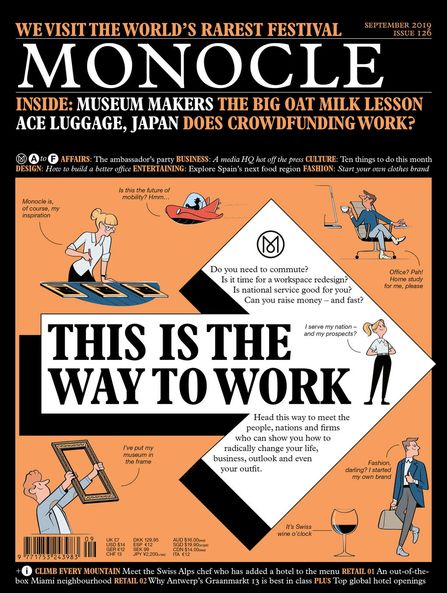 Almost five years ago we reported on Monocle saying no thanks to social media, as founder and publisher Tyler Brûlé publicly eschewed social media for his brand. Crazy? Some might have thought so, but he was insistent that he would make money as a media brand based on Monocle’s strength in print, and avoid any digital distraction.
Almost five years ago we reported on Monocle saying no thanks to social media, as founder and publisher Tyler Brûlé publicly eschewed social media for his brand. Crazy? Some might have thought so, but he was insistent that he would make money as a media brand based on Monocle’s strength in print, and avoid any digital distraction.
“I guess one of the main things is I feel this slightly-drawn-out debate surrounding print versus digital needs a bit of an end mark,” Brûlé said at a conference in 2015. At the time he espoused the firm belief that digital was not going to be the “savior” that so many in publishing were hoping it might be.
Two years later they celebrated their 10th anniversary, as the brand-turned-media empire now boasted a brick and mortar retail presence and a radio station – and still no social media strategy.
Today, the growth continues as Brûlé becomes an industry symbol of knowing who you are as a brand.
“The London based Monocle, a family business, started almost 13 years ago with nine staff members,” writes Piet van Niekerk in FIPP. “This has now grown to a team of 150 spread across other locations such as Tokyo, Hong Kong, Zurich, Milan, Los Angeles and Toronto. The magazine was launched to provide a briefing on global affairs, business, culture and design with the belief that there was a globally-minded audience of readers who were hungry for opportunities and experiences beyond their national borders. Published 10 times a year out of Midori House in London the magazine has seen its sales grow to more than 84,000 copies in over 80 countries per issue with over 20,000 subscribers.”
FIPP reported on Brûlé’s comments at the 42nd FIPP World Congress recently in Las Vegas. He insists his brand has grown to what it is today because they are making decisions based on what’s best for the brand, not what’s current or trending.
“Everything you see is done in a traditional way,” he said at the event. “We are not tablet friendly. It is just a series of PDFs.”
This is because they believe the quality of a magazine printed on good stock paper with great design and photography “cannot be replicated in a digital format.”
The brand experience itself emulates this ideal, elevating the traditional magazine content model into something truly exceptional.
“As far as revenue streams are concerned, said Brûlé, their main income is still derived from advertising, largely driven by print,” van Niekerk notes. “However, after experimenting with podcasts for nine years, they are seeing a significant growth in podcast income with growth in the last year being ‘probably’ around 150 percent.”
“This is really the engine for growth right now,” Brûlé notes. Beyond the print title, they’ve collaborated with Hong Kong Airport to open a 1,600 square foot book and magazine shop, “a proper bookstore “ as he describes it.
It’s refreshing to see this kind of growth and success for Monocle, and it proves the absolute power of staying true to one’s brand and, by extension, one’s audience.

December 16, 2020, 8:19 am